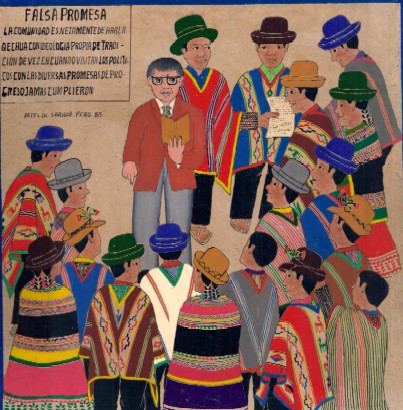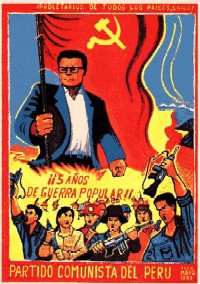Historical Context
Ancient Peru was the seat of several prominent Andean civilizations, most notably that of the Incas whose empire was subjugated by the Spanish conquistadors in 1533. Peruvian independence was declared in 1821, and remaining Spanish forces beaten in 1824. After independence, Peru and its neighbors engaged in intermitent territorial disputes, including the War of the Pacific (1879-1884), after which an extraordinary effort was made to rebuilt the country. The government started to initiate a number of social and economic reforms in order to recover from the damage of the war. Political stability was achieved only in the early 1900s.
In the first half of the XXth century, Peru was shaped by a succession of brief democratic governments, military dictatorships, intermingled with periods of severe and often brutal repression. In the 1960’s, revolutionary leaders of the radical left sought to win power in Peru as well as throughout Latin America by means of guerrilla warfare. The Revolutionary Left Movement (MIR) launched an insurrection that was crushed in 1965, but Peru's internal strife would only accelerate until its climax in the early 1980s with the emergence of a maoist- inspired guerrilla movement: Shining Path.
The military has been prominent since the birth of Peru. Military coups have repeatedly interrupted civilian constitutional government, and rural insurgent movements, like the Shining Path (Sendero Luminoso, SL) and the Tupac Amaru Revolutionary Movement (Movimiento Revolucionario Tupac Amaru - MRTA) increased during the second half of the XXth century, contributing to the rise of organised violence in the country.
Civil War (1980-2000)
During the 1980’s, Peru experienced economic problems and the growth of a violent insurgency. The economic turbulence of the time acerbated social tensions in Peru and partly contributed to the rise of the violent rebel movement Shining Path and MRTA.

Painting from Sarhua (Ayacucho, Peru), 1985.
The shrewish economic problems left over from the previous military government persisted, worsened by the "El Niño" weather phenomenon in 1982–83. The climatic fluctuation caused widespread flooding in some parts of the country, severe droughts in others, and decimated the schools of ocean fish that are one of the country's major resources.
Concerned about the economy, the increasing terrorist threat from guerilla movements , and allegations of official corruption, Peruvians chose a relatively unknown agronomist-turned-politician of Japanese descent, Alberto Fujimori, as president in 1990. His election ushered in a decade that saw a dramatic turnaround in the economy and significant rise in repressing guerrilla activity and human rights’ abuses.

Fujimori's regime was particularly challenged by the Sendero Luminoso’s terrorist campaign in the countryside. The fight was marred by atrocities committed both by the Peruvian security forces and the insurgents. In September 1992, the capture of Abimael Guzmán (leader of the Shining Path) gave a severe blow to the organization.However, Fujimori's increased reliance on authoritarian measures, his bribery scandal and an economic slump in the late 1990s generated growing dissatisfaction with his administration.
Poster from the Shinning Path celebrating five years of war.
In November 2000, Fujimori renounced the presidency and self-exiled to Japan, avoiding prosecution for human rights violations and corruption charges by the new authorities. His main intelligence chief, Vladimiro Montesinos, was later imprisoned and charged with acts of corruption and human rights violations committed during Fujimori's administration.
In 2001, Alejandro Toledo became Peru's first democratically elected president of Native American ethnicity. After national strikes in 2003, Toledo declared a state of emergency that suspended some civil liberties and gave the military power to enforce order in 12 regions. The state of emergency was later reduced to the few areas where Shining Path was operating.
The Truth and Reconciliation Commission (CVR), commissionned with the responsibility of conducting an assessment of two decades of extreme political violence during the 1980–2000, concluded in 2003 that an estimated 69,280 people were killed or disappeared. The government began to compensate guerrilla war victims, chiefly rural Peruvians of ethnically Indian descent - $800m were earmarked for the purpose.

Comparsa de Dansantes. Quechua-speaking highlanders dance in Ayacucho. Picture by Gilles Bibeau.
For news about our program, please click here. For news from Peru, please visit the following local websites:
- El Comercio - Lima daily
- Gestion - Lima daily
- Ojo - Lima daily
- El Bocon - Lima daily
- La Republica - Lima daily
- Correo de Arequipa - Arequipa daily